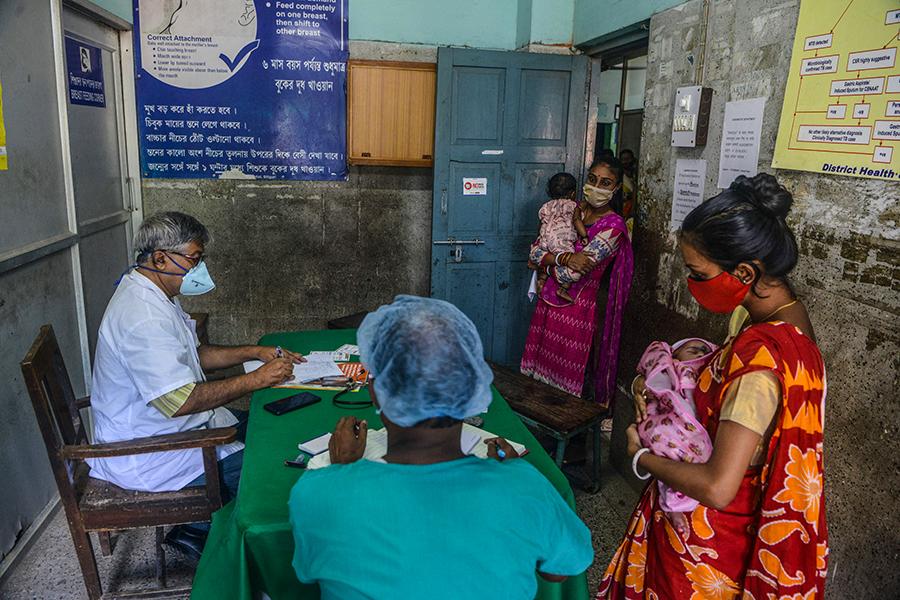How to prepare India's health infra to protect children from Covid third wave
We need to collectively rally behind a practical and concrete plan to protect our children by investing in health and education, building resilient systems and services that can reach them
In 2020, hospitals and the entire healthcare system struggled to pivot and deal with the catastrophic Covid-19 outbreak. We lost millions of lives. Luckily for us, our children, almost 40 percent of India's population, were somehow protected from the worse of the disease.
The sero-surveillance reports indicate that healthy children are largely asymptomatic or mildly symptomatic, but children with co-morbid conditions have more severe manifestations and poorer outcomes. And although children currently account for about three percent to four percent of hospital admissions in India on account of Covid-19, looking at the US’ surging numbers of children being hospitalised, India cannot be nonchalant about protecting its children.
India needs to address the health infrastructure challenges with suitable medical expertise, equipment and approach to protect its children against a possible third Covid-19 wave.
Strengthen paediatric care
Even pre-pandemic, for millions of Indian children, 'normal' was never good enough to begin with. The primary health centres (PHCs) and community health centres (CHCs) address the majority of healthcare needs across rural and marginalised India but face an acute shortage of paediatricians—82 percent and 63 percent of positions lay vacant in these rural and marginalised areas, respectively. Therefore, we need to put out a nationwide call for the recruitment of paediatricians into the government healthcare system.
Paediatric ICUs are needed since severe Covid-19 in children can take somewhat different forms than in adults. Unlike adults, children's medical devices and equipment need to come in various sizes and monitoring systems. Our ground observations show the dire need for paediatric equipment in PHCs, CHCs and district-level hospitals.
Hospitalised children need a conducive environment because they're away from parents and in an alien environment. We must introduce detailed child-protective Covid-19 appropriate behaviour (CAB) protocols for caretakers, doctors, and health care professionals like training them in communication skills, understanding nonverbal clues while taking care of children in hospitals. Overall, hospitals also need to have cheerful spaces with colourful walls, toys, and activities to help children remain jovial. To help children and parents cope with uncertainties and anxiety, public health counsellors and counsellors at PHCs and CHCS should also be utilised.
For recovering children, healthcare workers need to train frontline workers like ASHA and parents to identify post-recovery symptoms such as psychological stress, anxiety or multisystem inflammatory syndrome, a serious condition in which some parts of the body—such as the heart, lungs, blood vessels, kidneys, digestive system, brain, skin, or eyes—become severely inflamed. This will help them report back to medical professionals on time to seek appropriate medical help.
Lastly, governments should set up paediatric task forces to standardise guidelines for clinical management of children, training paediatricians and analysing the existing infrastructure for treating children. This taskforce can also develop the integration of Covid-19 care into regular health programs to ensure that patients with severe diseases do not suffer.
Need for more
We need to prioritise vaccinations for vulnerable populations—expecting women and lactating mothers, parents of infants and young children, while vaccinations trials continue for children. Healthcare access is a challenge for women and children due to lack of mobility. Therefore, initiatives such as Doctor on Wheels should be explored. Vehicles, equipped with essential medical equipment, vaccines and medicines, can travel to remote and marginalised locations to vaccinate and provide medical assistance. Free medical teleconsultations can assist homecare, testing and referral of critical patients to nearby hospitals, along with the crucial element of psychosocial counselling.
More than a third of children in India are malnourished, which puts them at risk of severe Covid-19 and even death. Therefore, we need to intensify programmes to protect, promote and support optimal breastfeeding, age-appropriate complementary foods and strengthen nutrition schemes such as mid-day meals with supplementary nutrition.
Family and community mobilisation
Community awareness programs are effective. We need to mobilise existing structures of PRI, Common Service Centres (CSCs), anganwadis, and women community leaders to reach out to the community and prepare them to address the effect of Covid-19 on children, spread awareness on CAB, vaccination and child-appropriate protocols through community outreach, community radios, TV and social media. Bhutan's Covid-19 campaign even included religious leaders for successful community engagement.
Psychosocial support starts with pre-emptive care. Since the pandemic, children have been exposed to uncertainty and anxiousness since there has been no filtration of Covid-19-related information. Outreach programs should empower families to filter frightening, upsetting information, correct any misinformation or rumours they hear and convey information to children in a way that they would understand. Additionally, children need mental health care provisions outside the formal system, i.e., villages and communities.
Finally, the government and civil societies need to gather data and work with scientific groups to understand the overall impact of the Covid-19 pandemic and associated lockdown on children across India.
We need to collectively rally behind a practical and concrete plan to protect our children—invest in health and education, build more resilient systems and services that can reach all children, and ensure that investments continue to be made towards their health and future.
The author is the country director of ChildFund in India.
The thoughts and opinions shared here are of the author.
Check out our end of season subscription discounts with a Moneycontrol pro subscription absolutely free. Use code EOSO2021. Click here for details.
